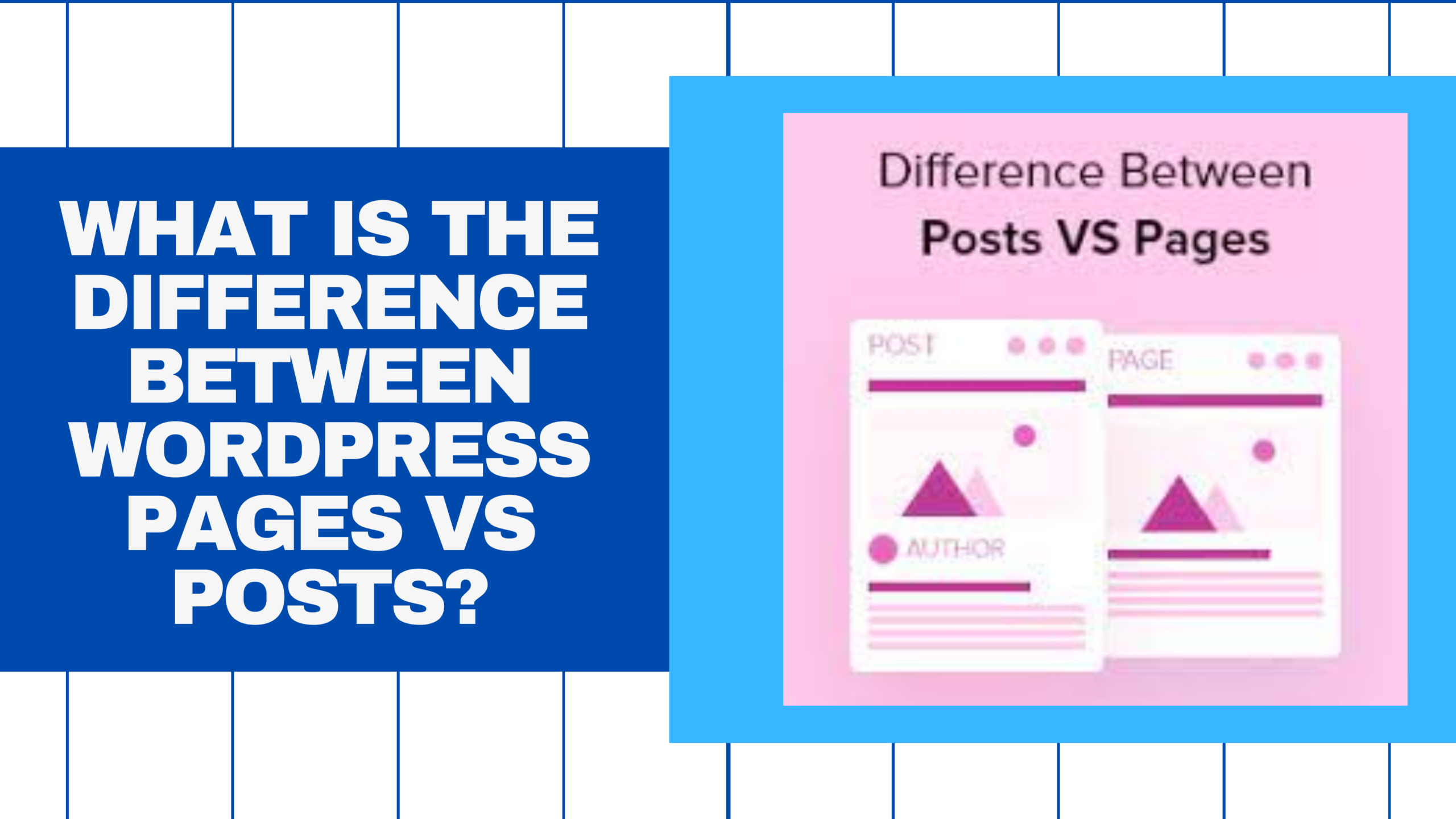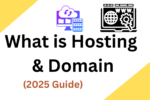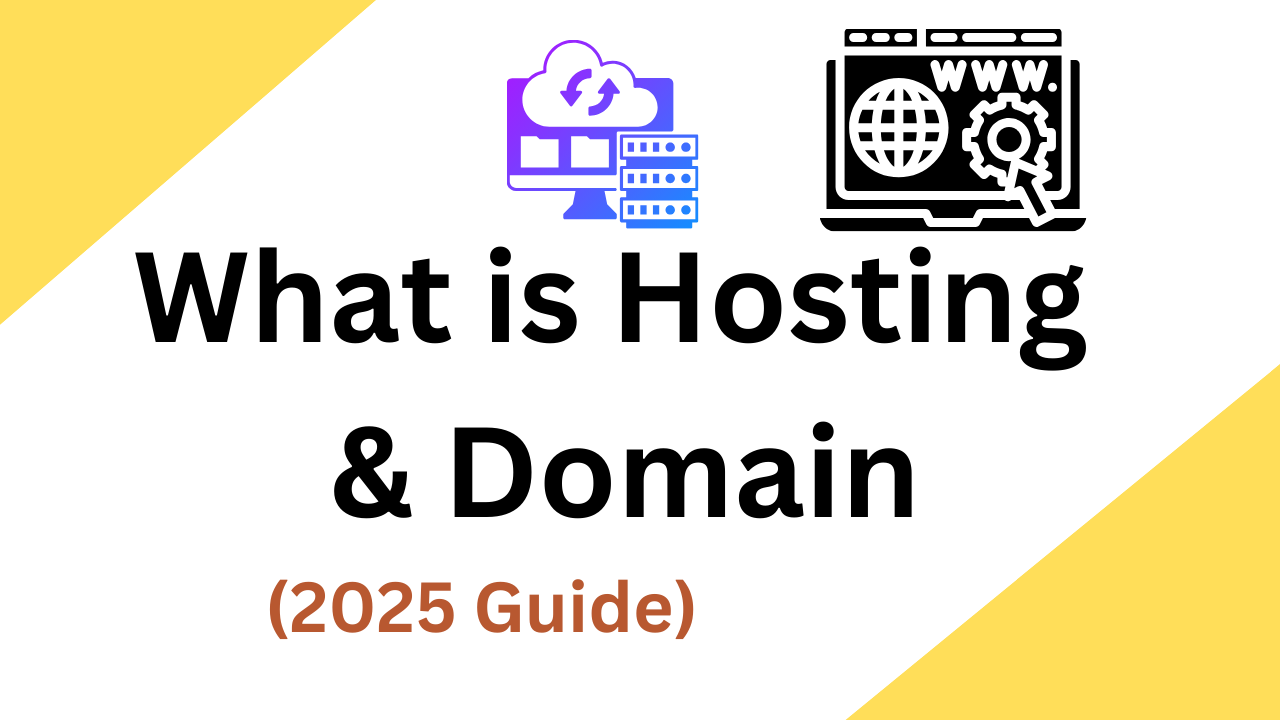Table of Contents
ToggleWhat is the Difference between WordPress Pages vs Posts?
A WordPress private page and post are not visible to the public. In other words, visitors can’t see the content even if they know the URL. It is only available to authorized users who are logged in to the Dashboard.
This might seem contradictory to WordPress’ core function—content publication. However, some information is not meant to be shown publicly.
For example, as a manager wanting to train your staff, sharing training materials or internal information online might not be ideal.
As you delve into WordPress, you’ll inevitably question the difference between posts and pages. Many tutorials focus on various WordPress tasks but often overlook fundamental questions like this. Understanding the key differences between a page and a post, and knowing the implications of choosing one over the other, is foundational for using WordPress effectively.
Understanding the key differences between a page and a post, and knowing the implications of choosing one over the other, is foundational for using WordPress effectively.
In this post, we’ll explore the general differences between posts and pages in WordPress. We’ll then dive deeper into each category to help you understand why the WordPress team created both pages and posts.
We’ll address some commonly asked questions about pages and posts, such as when to use each, the SEO implications of WordPress posts and pages, and how they relate to each other within the CMS. Finally, we’ll briefly examine how each differs from categories in WordPress.
WordPress Posts vs Pages, WordPress is a robust platform supporting various website types, including blogs, online portfolios, and eCommerce stores. When creating a WordPress site, you’ll mainly present your content as posts and pages.
This guide will explain the key differences between a WordPress post and page, helping you better understand WordPress and its different content types. We’ll also show you when to use each content type and answer some common questions about them.
By default, WordPress offers two different content types: posts and pages. Although they appear similar in the WordPress dashboard, they serve different purposes for your website.
Starting a WordPress site can seem overwhelming, especially for beginners who often find it challenging to understand the difference between a page and a post.
In a nutshell, pages are used for static content, whereas posts are for timely content that is regularly updated. Depending on your website, you can use any combination of pages and posts. Both have their uses, so it’s worth understanding their relative strengths.
In this article, we’ll explain the difference between a WordPress page and post and provide examples of how you can use both. Let’s get started!
WordPress Pages vs Posts: What’s the Difference?
Before we examine the differences between posts and pages in WordPress, let’s briefly define each term:
WordPress Post: A WordPress post forms the blog aspect of your site. Posts contain content organized by publication date and can be categorized and tagged. They may also be “pinned” to stay at the top of your blog regardless of publication date. Here are some key points:
- Posts are generally news or informational updates about a specific topic.
- They are listed in reverse chronological order and can be tagged, categorized, and archived.
- Posts make up the RSS content of your WordPress blog, so subscribers to your RSS feed receive your posts.
- Think of posts as the dynamic, constantly changing news portion of your site.
WordPress Page: WordPress pages are similar to posts in that they have a title and body text, but they serve different purposes. Pages typically contain more generic, static content. Unlike posts, pages don’t have publication dates and are usually part of the static sections of your site. For example, a FAQs section is likely to be a page. Pages can also act as templates to store posts within them. Here are some key points:
- Pages are generally reserved for static content or information.
- Examples include About Me, Team, or Contact pages.
- Pages are not listed by date and cannot be categorized or tagged like posts.
- Pages can have a hierarchical structure, allowing you to nest pages under other pages by making one the “Parent” of another.
- Due to their static nature, pages are not included in RSS feeds and don’t have a publication date.
Understanding these distinctions helps you use WordPress more effectively by knowing when to use posts versus pages based on the type of content you’re creating.
WordPress Posts vs Pages: Timeliness, Organization, Templates, and Interactivity
WordPress Posts vs Pages: Timeliness
When launching a WordPress website, some content may remain unchanged for years. This includes your About section, company history, and contact details. It’s common for a website to display static, timeless information as pages added to the main menu.
Pages usually contain evergreen content that’s rarely changed, though you can update them as needed, such as when you move to a different address or introduce a new service.
Posts, on the other hand, are more dynamic. They’re used for timely content that you want to update regularly after publication. Use posts to share company updates, publish guides, or write opinion pieces on current trends. The information in posts may become outdated, especially in fast-evolving industries. Fortunately, you can easily update sections or refresh entire posts if needed.
WordPress Posts vs Pages: Organization
Another key difference between WordPress posts and pages is organization.
Pages typically have a hierarchical structure. For example, you can set up your About page with the following subpages:
- The Company
- History
- Mission and values
- The Team
- Our marketing gurus
- Our SEO experts
- Our office dogs
This hierarchy makes it easy for visitors to find what they’re looking for on your site. Setting up hierarchical pages in WordPress is straightforward. In the Block Editor, navigate to Page Attributes and select the parent for your current page.
Posts, meanwhile, can be organized using taxonomies like categories and tags. This allows readers to search for content on the same topic. For a blog on digital marketing, you can sort posts into categories such as:
- Social media
- Email marketing
- Search engine optimization
- Blogging
You can also use tags to categorize different types of posts, such as:
- How-to guides
- Tips and tricks
- Product reviews
To organize your posts, navigate to Posts → Categories (or Tags). Create categories, subcategories, and tags, and then add them when writing a new post. Posts can also be categorized by author, allowing readers to explore other posts by a specific writer.
WordPress Posts vs Pages: Templates
When comparing pages and posts in terms of templates, installing a WordPress theme typically provides a set of templates for key pages on your site, including:
- Home page
- About
- Archive page
- Blog page
- 404
- Contact
- Privacy policy page
- Single page or general page template
These templates are ready-made designs that you can edit to include your information or reuse for other purposes. For example, use the single page template to create a landing page for a product. If you’re using a block-based theme, access these templates from the WordPress Site Editor by navigating to Appearance → Editor → Templates.
For posts, most themes offer only the single post template. However, some themes allow customization of this post template. Additionally, some themes offer post formats and custom post types, such as gallery and video post formats in a portfolio theme.
WordPress Posts vs Pages: Interactivity
Finally, let’s compare posts and pages in terms of interactivity. Interactivity refers to features that enable visitors to engage with your website’s content.
WordPress posts usually have comments enabled by default, allowing readers to ask questions or start discussions about your article. You can install a comments plugin to offer more options, such as enabling comments from Facebook accounts.
Unlike posts, WordPress pages do not have comment sections but can facilitate social engagement through other means. For example, add a call-to-action encouraging users to request a quote or sign up for your newsletter. Pages can also include contact forms, polls, surveys, RSS feeds, and other interactive content.
Understanding the differences in timeliness, organization, templates, and interactivity helps you use WordPress more effectively by knowing when to use posts versus pages based on your content needs.
WordPress Posts vs Pages: Ownership
Apart from the date, each WordPress post usually displays an author, categories, and tags. This information typically appears at the top or bottom of your posts, depending on your theme.
By default, posts are personalized with details such as the author’s name and gravatar. This is especially useful if your website has multiple contributors, helping your audience connect with each author, especially if they specialize in different topics or have distinct styles.
On the other hand, pages are more universal and typically do not include the author’s name, as the identity of the publisher is less relevant. Pages usually reflect your website or business as a whole, rather than belonging to an individual.
WordPress Posts vs Pages: Social Engagement
When it comes to interacting with your audience, posts are the perfect platform. By default, posts include a comments section, though you can disable it if preferred. Many themes also feature social media buttons, allowing visitors to instantly share your content with their networks.
If your theme doesn’t enable social sharing, plugins like Jetpack can help you add this feature. You can also distribute your posts via RSS feeds, so readers can stay updated with your latest news.
Pages, on the other hand, usually don’t include comments, though you can enable this functionality if desired. However, sections like your About page typically aren’t ideal for social interaction. Instead, encourage discussion under your posts by adding a call to action (CTA) at the end of each article.
4 Key Differences Between WordPress Pages and Posts
Now that you understand the general distinction between these two features, let’s take a closer look at how they work and how they should be used.
1. Posts Can Increase Engagement: Blogging is an excellent content marketing tool. By default, readers can leave comments under your posts, though you can disable this feature if preferred. Many themes include social media buttons so visitors can easily share your content on their favorite platforms. Additionally, you can use social media plugins to add sharing features almost anywhere on your site. WordPress pages have comments disabled by default since you typically don’t want visitors commenting on pages like “Our Services.” However, you can enable comments for specific pages or for all pages if desired.
2. You Can Organize Posts With Tags and Categories: When you create a post, you can assign it to a category and add tags, allowing your visitors to browse content by topic rather than chronologically. Here’s how both work in a nutshell:
- Categories: These function like a table of contents for your website. For instance, if you sell merchandise, one of your categories might be “T-Shirts.”
- Tags: These are more specific terms related to the content. For example, an announcement about a new t-shirt line might use tags like “Organic Cotton” or “Graphic Tee.”
Pages, however, don’t use tags and categories. Instead, you can organize them into ‘parent’ and ‘child’ pages to group them hierarchically. For instance, you might have a parent page called “Apparel” with subpages “Women’s Apparel” and “Men’s Apparel.”
3. You Can Include Posts in RSS Feeds: Because posts have a published date, they can be distributed through RSS feeds. This feature is useful for readers using services like Feedly to keep track of recent content from multiple sources. You can also use RSS to create a newsletter and deliver it via email marketing platforms such as MailChimp, allowing subscribers to receive notifications about your latest posts. Pages, on the other hand, cannot be syndicated via RSS, though new pages are published infrequently.
4. Posts Feature a Date and Author: At the top of each post, you will see the publication date and the author’s name. Depending on your theme, you can also display each post’s category, comments, and more. Pages do not feature these details since they are designed for content that should remain prominent regardless of when it’s accessed. Examples of static content include your Contact and About pages, product displays, or portfolio pages.
WordPress Posts Explained Essential Things to Know
The vast majority of content on WordPress sites is in the form of posts, which is why “Posts” is the first main menu option on your dashboard.
1. Posts are “Dynamic” or Time-Based: Blog posts are designed to be timely updates or informational pieces about a certain topic, unlike the “evergreen” content typically found on pages.
2. Posts are Listed By the Date They Are Published: When you create a post and add it to your WordPress site, it appears first because posts are listed in reverse chronological order. WordPress posts are more date-oriented, serving as a “news” outlet for your website or blog. By default, a timestamp and the author’s name are automatically included when you publish a post.
3. Comments are Enabled By Default: WordPress allows comments on your blog posts by default. However, comments can be turned off from your WordPress admin dashboard under Settings > Discussion.
4. Posts Are Organized in an Archive: Initially, your latest blog posts will make up the home page of your site. If you prefer them displayed on a different page, you’ll need to create a new static page for this purpose. Blog posts are usually organized into a “Blog” page, also known as the archive page. To set where your posts are displayed, go to Settings > Reading and select the pages you want for your homepage and posts page (or archive).
5. Posts Can Be Organized with Categories and Tags: One common issue with WordPress posts is that they can get lost over time as they are sorted in reverse chronological order. Frequent additions of new posts can make it easy to lose track of older content. Categories and tags help organize posts, making it easier for visitors to find content by topic rather than date.
Understanding these aspects of WordPress posts helps you effectively manage and organize your dynamic content, ensuring it remains accessible and engaging for your audience.
WordPress Pages Explained Essential Things to Know
1. Pages Contain “Static” or “Evergreen” Content: The most significant difference between pages and posts in WordPress is that pages typically contain static content. Common examples include FAQs, “Contact Us” pages, and pages with Terms and Conditions or Privacy Policies. While WordPress does store the date a page is created and modified, this information is not displayed on pages, unlike posts where the date is prominently shown. Pages are intended to remain consistent and relevant throughout the life of your site.
2. Pages Can Be Organized in a Hierarchy: Unlike blog posts, pages can be organized hierarchically. This means a page can have a “parent” page above it or a “child” page below it. To assign a page as a parent or child, you simply set the page’s attribute accordingly.
3. Pages Have Their Own Settings: All your WordPress site’s pages can be found in the “Pages” menu on your dashboard. When you click “Create a New Page,” you’ll notice a few key items. For instance, some settings, like comments, aren’t enabled by default and need to be manually activated if you want this functionality.
4. Pages Can Have Different Templates: Unlike blog posts, pages can utilize different templates provided by your WordPress theme. Templates allow you to change the format and layout of the page to fit your design needs. For example, Kadence WP offers ready-to-use starter templates that can be customized without coding. These templates and sections from the design library make it easy to build new pages.
5. Pages Do Not Appear in RSS Feeds By Default: If you use RSS feeds, it’s important to note that pages do not appear in RSS feeds by default in WordPress, even if they are published after your site is online. This is a key difference from posts, which are included in RSS feeds.
Understanding these aspects of WordPress pages helps you utilize them effectively, ensuring that your site’s static content is well-organized, appropriately formatted, and easily manageable.
When Should You Use WordPress Posts and Pages?
Now that we’ve discussed the main differences between WordPress posts and pages, let’s take a closer look at when to use each.
When You Should Use WordPress Posts
If you’re starting a blog, you’ll likely be creating posts more frequently than pages. Even if you have an online store or portfolio, you can use posts to keep the website fresh with new content. Here are some common examples of WordPress posts:
- Opinion Pieces and Industry News
- How-To Guides and Tutorials
- Product Reviews and Recommendations
- Seasonal Gift Guides
- Tips and Tricks
- Personal Reflections
You can use posts for almost any type of article. For instance, if you have a travel blog, your posts might include destination guides, itineraries, packing lists, and safety tips. If you run a creative agency website, use posts to share web design tips, branding inspiration, and solutions to common website problems.
WordPress also has a sticky post feature that lets you pin an article to the top of the feed for enhanced visibility. This can be useful for highlighting your latest posts or a key article.
Additionally, you can add your blog posts to a specific page in WordPress. This ensures that your blog content is organized and easily navigable, enhancing the user experience.
Why and When Would You Use Posts?
A WordPress private post limits visibility to certain users, ensuring only authorized personnel can view it. To understand this better, let’s review WordPress’ user roles:
- Administrator: The site owner with full control over the site, including modifying posts, managing users, installing plugins, and changing Dashboard settings.
- Editor: Can modify every post in the Dashboard but cannot install plugins or change settings.
- Author: Can only modify their own posts and have no access to posts written by others.
- Contributor: Can modify their own posts but lose editing access once the post is published and cannot add images to their posts.
- Subscriber: Must log in to view content but have no other functionality.
Only Administrators and Editors can view WordPress private posts, with the Administrator granting the initial permission. This feature is particularly useful for maintaining privacy over your content. Here are some specific scenarios where private posts can be beneficial:
1. News Blog Assign different roles to your editors and content writers to streamline the content management process. This ensures that only authorized users can view and edit certain posts.
2. Private Blog Share personal content that you want to keep private. You can also invite family members and friends to view these posts, creating a space to cherish moments together.
3. Exclusive Forum Create a space for people with shared interests to exchange exclusive content. One person can act as a moderator, managing the content and interactions within the forum.
4. Development Area Preview how your post looks before making it public. You can also invite others temporarily to collect feedback and make necessary adjustments.
5. Trial Area If you frequently write about WordPress and take many screenshots, use private posts to keep your trial content private. This allows you to experiment without exposing unfinished work to the public.
Using private posts ensures sensitive information is only accessible to authorized users. However, be cautious when sharing sensitive information, as Editors have full control over your content.
When You Should Use WordPress Pages
Every WordPress site will need at least one page – the homepage. You should also create pages for key information about your business or project. Popular examples of WordPress pages include:
- About Us
- Blog Page
- Contact
- Services
- Portfolio
- Testimonials
Any piece of important, static content should go on a page. For instance, if you sell courses, put your course details on a page and add it to the site menu for easy access. Similarly, if you sell an app, create a product page that contains information about its features and pricing.
By understanding when to use posts and pages, you can effectively structure your WordPress site to meet your content and organizational needs.
How to Create a Private Page in WordPress
Creating a private page in WordPress is a straightforward process, whether you’re working with new or existing posts. Follow these steps to set up a private page:
Creating a New Private Post
- Navigate to the Visual Editor:
- Go to
Posts > Add Newin your WordPress dashboard.
- Go to
- Set Visibility to Private:
- In the Publish module, locate the Visibility section and click on
Edit. - Select the
Privateoption and clickOK.
- In the Publish module, locate the Visibility section and click on
- Publish the Post:
- Click on
Publish. The status will update to “Privately Published.”
- Click on
Editing an Existing Post
- Find the Post to Edit:
- Go to
Posts > All Postsand select the post you want to edit.
- Go to
- Change Visibility:
- In the Publish module, locate the Visibility section and click on
Edit. - Select the
Privateoption and clickOK.
- In the Publish module, locate the Visibility section and click on
- Update the Post:
- Click
Update. The status will change to “Privately Published.”
- Click
Verify the Private Post
- View the Post on Your Site:
- Go to the front end of your site and find the newly published or updated post.
- Ensure you are logged in as an administrator or editor to see the “Private” label next to the post’s title.
Alternative: Password-Protected Posts
- Set Visibility to Password Protected:
- In the Publish module, locate the Visibility section and click on
Edit. - Select the
Password Protectedoption and clickOK.
- In the Publish module, locate the Visibility section and click on
- Enter a Password:
- Enter your desired password and confirm it by clicking
OK.
- Enter your desired password and confirm it by clicking
- Publish or Update the Post:
- Click
PublishorUpdateand view the post on the front end.
- Click
Accessing Password-Protected Posts
- View the Post on Your Site:
- Although not logged in, you can see the post on the archive.
- Enter the password to access the content.
By following these steps, you can effectively manage the visibility of your WordPress content, ensuring that sensitive information remains secure.
Should I Use a WordPress Post or Page?
Deciding whether to create a post or a page for your new WordPress content is crucial for both SEO and site organization. While the choice is ultimately up to you, understanding the distinct purposes of each can help you make an informed decision.
Before you start, it’s essential to have a reliable WordPress backup plugin like BackupBuddy. This ensures that if any errors occur, you can quickly restore your site to its previous state.
When to Use a WordPress Post
Consider using a WordPress post if your content meets most of these criteria:
- Time-Sensitive Information: The content includes updates or news that are relevant for a specific period.
- Timestamp Importance: The publication date is significant and will appear in search engine results.
- Regular Updates: You frequently publish new content for your readers and need a consistent format for updates.
- Reader Expectations: Regular readers expect new content periodically.
- Not Generic: The content is specific and not general, such as a Privacy Policy or Terms of Service.
When to Use a WordPress Page
Consider using a WordPress page if your content aligns with these factors:
- Promotional Content: The content is promotional rather than educational.
- No Timestamp Needed: The publication date is not relevant for this type of content.
- Memorable Link: You want a short, memorable URL for easy access.
- Static Content: The content is static and won’t change frequently, such as an About Us or Contact page.
Choosing between a post and a page depends on the nature of your content and its intended purpose. Posts are ideal for time-sensitive updates and regular content, while pages are better for static, evergreen information. By aligning your content with these guidelines, you can optimize your site’s SEO and user experience.
Do WordPress Pages or Posts Rank Better?
In the realm of SEO, there’s no inherent advantage for either WordPress pages or posts. Search engines like Google don’t prioritize one over the other based solely on their type. Instead, ranking depends on various factors, including content quality, relevance, and user engagement.
However, the distinction between pages and posts plays a crucial role in your site’s overall SEO strategy. Here are some essential guidelines to help you optimize your content for better rankings:
The Purpose of Pages and Posts
- Pages: Designed for evergreen, static content that remains relevant over time. Examples include About Us, Contact, and Services pages.
- Posts: Typically used for timely, news-oriented content that is regularly updated. Examples include blog articles, news updates, and product announcements.
Strategic Considerations
- Audience Focus: Posts are generally aimed at a broad audience and are more disposable, while pages cater to specific sections of your site that are frequently accessed.
- Shareability: Focus share buttons primarily on posts intended for social sharing to maximize their impact and potential ranking boost.
- Keyword Optimization: For pages, incorporate target keywords naturally throughout the content to enhance visibility. For posts, conduct keyword research to optimize for a variety of relevant terms.
While WordPress pages and posts serve different purposes, there’s no inherent bias in search engine rankings based on their type alone. Both are valuable for creating logical site structures and providing relevant content to users. By understanding their roles and optimizing content accordingly, you can enhance your site’s SEO performance effectively.
Also Read How to Fix the Error Establishing a Database Connection in WordPress
Conclusion
One of the first essentials to grasp when building your WordPress site is the distinction between pages and posts. While they might seem similar at first, these two content types serve distinct purposes and should be used accordingly.
Key Differences Between WordPress Pages and Posts
- Purpose and Usage:
- Pages: Typically used for static, evergreen content such as company history, team profiles, services, products, and contact details. Pages do not have a published date and are meant to be timeless.
- Posts: Ideal for timely content like tutorials, news updates, and product reviews. Posts are listed chronologically and often include a published date.
- User Interaction:
- Posts: Encourage user engagement through comments, which are enabled by default. Social sharing options are commonly included.
- Pages: Generally do not include comments, but focus on other forms of interaction like contact forms, calls-to-action (CTAs), and newsletter subscriptions.
- Organization:
- Posts: Can be categorized and tagged for better organization and searchability. Posts appear in reverse chronological order and can be part of an RSS feed.
- Pages: Organized hierarchically with parent and child pages. They are not included in RSS feeds and do not use categories or tags.
When to Use WordPress Pages vs. Posts
- Use Pages For:
- Timeless and universal content that rarely changes, such as About and Contact pages.
- Key information about your business or project that should remain easily accessible.
- Use Posts For:
- Regular updates, blog articles, news announcements, and dynamic content.
- Content that will be published frequently and may include different authors.
By understanding and utilizing the unique advantages of both pages and posts, you can create a well-structured and engaging WordPress site, whether it’s for blogging, business, or any other purpose.
In summary, WordPress pages and posts are foundational content types with specific roles. Use pages for static, evergreen content and posts for dynamic, time-sensitive updates to ensure your site effectively delivers valuable information to your audience.
FAQ’s for WordPress Posts vs Pages
What is the difference between a WordPress post and a page?
Answer: WordPress posts are typically used for timely, news-oriented content that is regularly updated, while pages are designed for evergreen, static content that remains relevant over time.
Do search engines prioritize WordPress pages over posts, or vice versa?
Answer: No, search engines like Google do not prioritize one over the other based solely on their type. Rankings depend on various factors such as content quality, relevance, and user engagement.
How should I use share buttons on my WordPress site effectively?
Answer: Focus share buttons primarily on posts intended for social sharing to maximize their impact and potential ranking boost. Avoid diluting their effect by placing them on every page and post.
What is the importance of keyword optimization for WordPress pages and posts?
Answer: For pages, incorporating target keywords naturally throughout the content can enhance visibility. For posts, conducting keyword research and optimizing for relevant terms improves the chances of ranking in search results.
Why does WordPress offer both pages and posts if search engines don't distinguish between them?
Answer: WordPress pages and posts serve different purposes in creating logical site structures and providing relevant content to users. While they may not affect search engine rankings directly, understanding their roles helps in optimizing content effectively.








1 thought on “Understanding WordPress Posts vs Pages: Differences and Best Use Cases 2024”